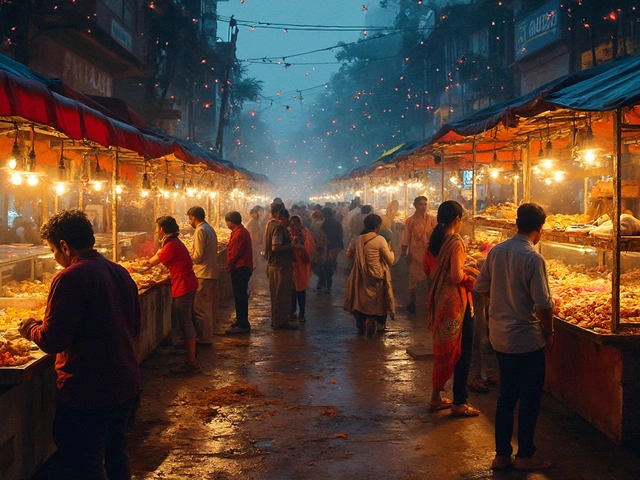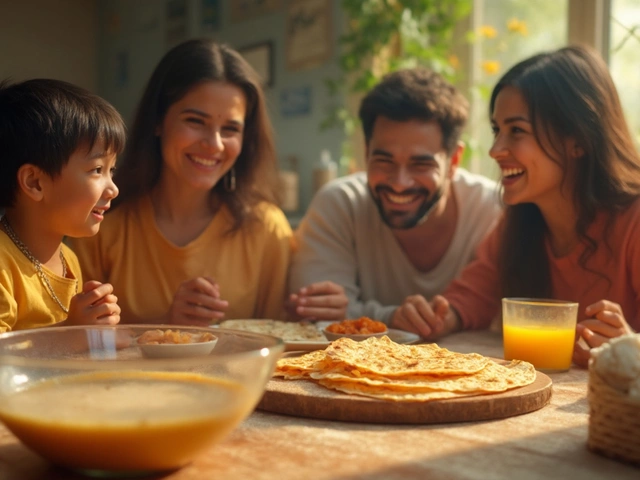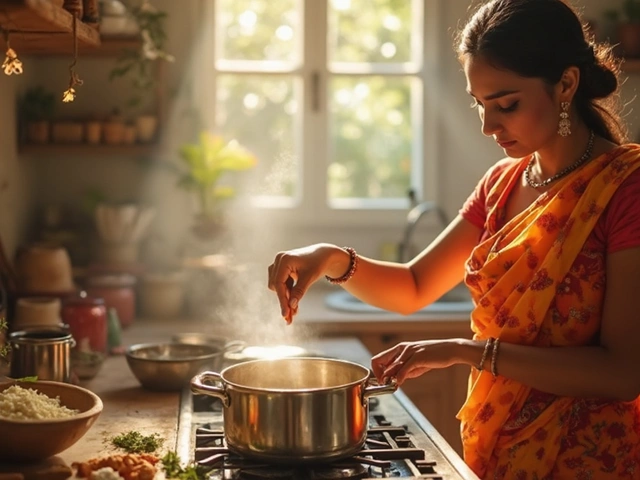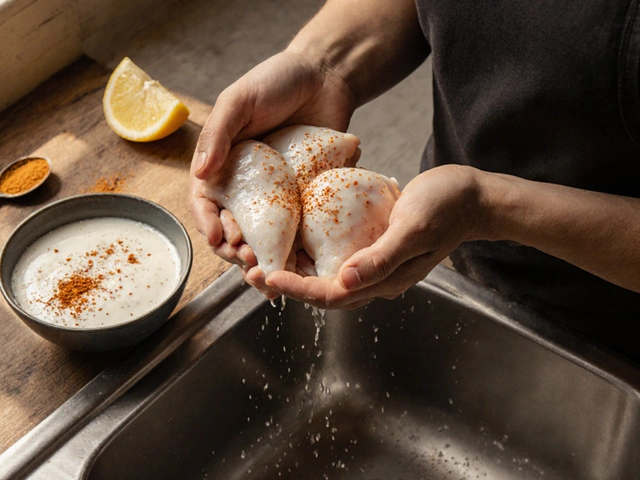If you think Indian food is always heavy, oily, or rich, you’re missing out on a whole world of healthy dishes packed with flavor and nutrients. Some Indian recipes are so full of good-for-you spices, beans, and veggies, it almost feels like cheating to call them comfort food. And the best part? You don’t need to be an expert cook or spend hours in the kitchen to whip up these meals.
Curious which Indian foods come out on top in terms of health? It’s not just salads or grilled chicken—think fiber-loaded dals, antioxidant-packed curries, and clever veggie sides that even picky eaters (yes, my own kids included) don’t turn down. Plus, a lot of classic Indian recipes are naturally gluten-free or vegan, so you’re not stuck hunting for weird substitutions.
If you want something quick and easy, keep an eye out for everyday dishes like moong dal (a gentle, protein-rich lentil stew), simple vegetable sabzi, or tandoori-style baked proteins. These aren’t just low on bad fats—they’re high on satiety, which means you won’t be grazing the fridge an hour later.
Want a tip straight from my kitchen? Swapping out ghee or too much oil for a splash of olive oil goes unnoticed by the kids, but leaves you feeling lighter. And fresh herbs like cilantro aren’t just a garnish—they boost flavor and pack in vitamins at the same time. Indian food can truly be as healthy (and simple) as you need it to be.
- Why Indian Food Can Be Super Healthy
- Staple Dishes That Pack a Nutritious Punch
- Tips to Make Indian Recipes Healthier at Home
- Best Ingredients to Keep in Your Pantry
Why Indian Food Can Be Super Healthy
Let’s get real: Indian food has a reputation for being loaded with butter and cream, but that’s mostly from restaurant menus trying to impress with rich flavors. If you look at what’s actually eaten in Indian homes, the story is totally different. Most family-friendly Indian meals are built around whole grains, lentils, beans, veggies, and tons of spices. It’s all about food that’s filling without being heavy, and packed with nutrients your body actually needs.
Take lentils and beans, for starters. In India, dal (split lentils) isn’t just a side dish—it’s the main protein in millions of homes. Just one cup of cooked lentils gives you about 18 grams of protein and more than half your day’s fiber. That means less mindless snacking and more steady energy all day.
The famous Indian spice cabinet is another big reason these recipes are so good for you. Turmeric, cumin, ginger, garlic—they’re not just for taste. Turmeric is known for its anti-inflammatory benefits, ginger for helping with digestion, and garlic for heart health. Indian cooking lets you get all the perks without swallowing supplements.
Vegetables also play a starring role. From spinach in palak (think homemade saag) to cauliflower in gobi sabzi, Indian recipes sneak in way more veggies than your average weeknight dinner. You don’t even have to try that hard—recipes like bhindi masala (okra) and lauki chana dal (bottle gourd stew) are naturally crowd-pleasing and nutritious.
Check out this quick comparison showing why home-cooked Indian meals can be so smart for your health:
| Indian Homemade Dish | Main Ingredients | Key Benefits |
|---|---|---|
| Moong Dal | Yellow split lentils, turmeric, tomato | High protein, low fat, helps digestion |
| Palak Sabzi | Spinach, garlic, cumin | Rich in iron, vitamin C, fiber |
| Tandoori Chicken | Chicken breast, yogurt, spices | Lean protein, low fat, probiotics from yogurt |
| Rajma (Kidney Bean Curry) | Red beans, tomato, onion, spices | High fiber, iron, plant-based protein |
If you want to feel full and still eat healthy, homemade Indian dishes really deliver. The trick is to skip the heavy creams and stick with the basics: whole spices, fresh veggies, and legumes. It’s not just good for your body—your taste buds (and your wallet) will thank you.
- Stick to home-style recipes rather than restaurant versions for less oil and salt.
- Add extra veggies wherever you can; Indian recipes are flexible.
- Cook with whole spices for flavor and health perks instead of relying on pre-mixed sauces.
The healthiest Indian food is often the simplest, made with easy-to-find ingredients that multitask—giving you flavor, fiber, and real nutrition without the post-meal sluggishness.
Staple Dishes That Pack a Nutritious Punch
When it comes to Indian food, some dishes stand out for their health benefits. You don’t need to hunt down expensive superfoods—just look at common meals served in Indian homes every day. Most of these dishes use simple ingredients that can be found at your local grocery store, and they’re easy to tweak for your own family.
Healthiest Indian food isn’t just a buzzword; let’s talk about real foods people make all the time:
- Moong Dal: This bright yellow lentil stew is a classic. Moong dal is packed with protein and fiber, but it’s also easy on the stomach. One cup gives you roughly 15g protein and hardly any fat.
- Chana Masala: Chickpeas in tomato-onion gravy may sound rich, but they’re actually high in iron, potassium, and plant-based protein. Eat it with brown rice or whole wheat roti for a filling meal.
- Palak Paneer: This spinach and cottage cheese combo serves up a ton of vitamin A and calcium, plus protein. Fresh spinach makes a difference, but frozen works well too when you’re short on time.
- Tandoori Chicken: It’s marinated in yogurt and spices, then baked. Unlike fried options, it stays lean and flavorful. If chicken isn’t your thing, try the same marinade with tofu or cauliflower.
- Vegetable Sabzi: Think of sabzi as a free-for-all for veggies. Broccoli, carrots, peas, bell peppers—almost anything works. Just sauté with a pinch of turmeric and cumin to boost flavor without drowning everything in oil.
Here’s a quick breakdown of how a basic Indian lentil meal stacks up nutritionally:
| Dish | Calories (per serving) | Protein (g) | Fiber (g) | Main Nutrients |
|---|---|---|---|---|
| Moong Dal | 120 | 15 | 7 | B vitamins, Potassium |
| Chana Masala | 210 | 11 | 9 | Iron, Zinc |
| Palak Paneer | 190 | 13 | 4 | Calcium, Vitamin A |
| Tandoori Chicken | 175 | 22 | 0 | Vitamin B6, Selenium |
| Mixed Veg Sabzi | 90 | 3 | 5 | Vitamin C, Folate |
If you’re looking for ways to up the nutrition, skip creamy sauces and pile on veggies or legumes instead. Small swaps—like using less oil or full-fat dairy—can make a big difference without taking away that classic Indian taste. Trust me, kids can’t tell the difference, and you’ll probably feel the change long before they ever notice.
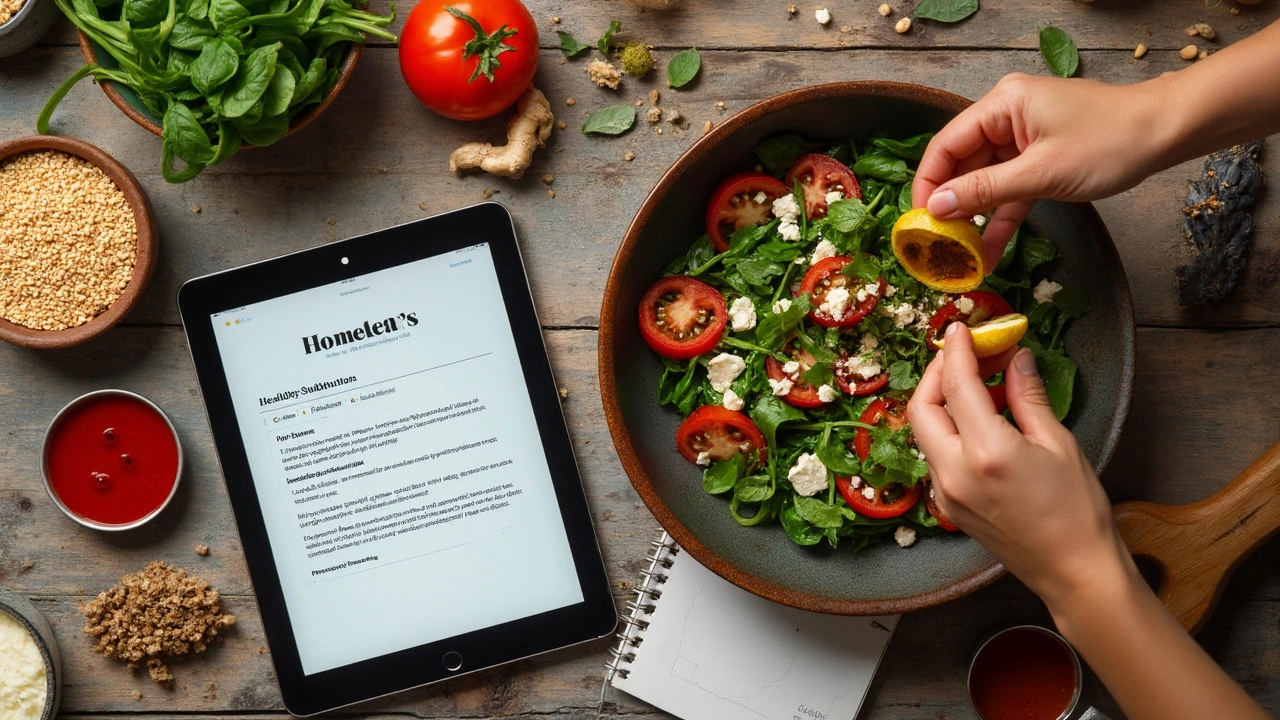
Tips to Make Indian Recipes Healthier at Home
Healthy eating with Indian food isn’t rocket science—it’s often about small swaps and knowing which ingredients do your body good. The real flavor in Indian dishes comes from spices, not butter or cream, so you can boost taste while dialing back on calories and fat.
Here’s what works in a regular family kitchen, even if you’re squeezed for time or shopping in an average grocery store:
- healthiest Indian food often starts with legumes like lentils, chickpeas, or beans instead of only white rice or naan. Dals, chana masala, and rajma are all super filling and give you plenty of fiber and plant protein.
- Go easy on oil. Sauté with a nonstick pan so you need less, and swap ghee or coconut oil (which is high in saturated fat) for canola or olive oil. You usually only need one or two tablespoons per recipe.
- Batch-cook your dals and freeze portions. Home-cooked beats takeout, and you control the salt and spice levels.
- Use Greek yogurt for creaminess in curries or marinades. It’s lower in fat and ups the protein, especially in dishes like chicken tikka or raita.
- Add more vegetables. Toss an extra handful of spinach into saag, bell peppers into sambar, or shredded carrots into parathas. Kids don’t even notice by the time it hits the table.
- Skip deep-frying snacks like samosas or pakoras and oven-bake them instead. Spray or brush with a little oil—crunchy, but way lighter.
- Cut back on salt. Try a squeeze of lemon or sprinkle of amchur (dry mango powder) at the end for a flavor bump without loads of sodium.
Need proof that these swaps matter? Check out this table comparing typical ingredients:
| Ingredient | Traditional Amount | Healthier Swap |
|---|---|---|
| Ghee (per serving) | 2 Tbsp (28g fat) | 1 Tbsp olive oil (14g fat) |
| Whole milk yogurt (per 100g) | 60 kcal, 3g protein | Greek yogurt: 59 kcal, 10g protein |
| White rice (per cup) | 200 kcal, <1g fiber | Brown rice: 215 kcal, 3.5g fiber |
If you try just a couple of these ideas, cooking and eating Indian food at home will get way healthier—and nobody will feel like they’re missing out. Small tweaks, big difference; that’s my kind of kitchen hack.
Best Ingredients to Keep in Your Pantry
If you want to make quick, healthy Indian dishes at home, having the right pantry basics makes all the difference. You don’t need fifty exotic spices—just a handful of essentials can open up a world of easy meals. Here’s what gets used again and again in my own kitchen (no endless shopping lists required!).
- Lentils and Beans: Stock up on dry or canned moong dal, masoor dal (red lentils), chickpeas, and black beans. They’re unbeatable for protein, fiber, and energy. A serving of cooked lentils gives you almost 15 grams of protein—more than an egg and with nearly zero fat.
- Brown Rice or Quinoa: Swapping out white rice for brown rice or quinoa means more fiber, just as filling, and the kids won’t even notice if you make it with a good curry.
- Whole Spices: Cumin seeds, coriander seeds, mustard seeds, and turmeric powder—these boost flavor and have real health benefits. Studies from the Indian Journal of Clinical Biochemistry show turmeric lowers inflammation and supports heart health.
- Healthy Oils: Mustard oil or olive oil are good swaps for traditional ghee or butter, especially if you’re watching cholesterol or weight.
- Canned Tomatoes and Tomato Puree: These bring dishes together when you’re out of fresh tomatoes, and add a dose of lycopene, an antioxidant that’s especially good for skin and heart.
- Basic Veggies: Onions, garlic, and fresh ginger are non-negotiable for nearly every Indian recipe—seriously, if there’s one trio you keep in constant rotation, let it be this one.
I love how healthiest Indian food often means quick pantry meals—lentil soups, one-pot sabzi, or a veggie stir-fry with spices. You don’t have to plan ahead for hours or hunt for rare ingredients.
"Stocking a basic Indian pantry with a few key spices and lentils can help anyone cook healthy, flavorful meals any day of the week." — Dr. Rupy Aujla, The Doctor’s Kitchen
Here’s a bonus: keep frozen spinach or peas for last-minute veggie boosts, and grab a can of coconut milk for occasional creamy curries without loads of dairy. The right pantry setup doesn’t just save time; it sets you up to eat healthier, without missing out on flavor.







